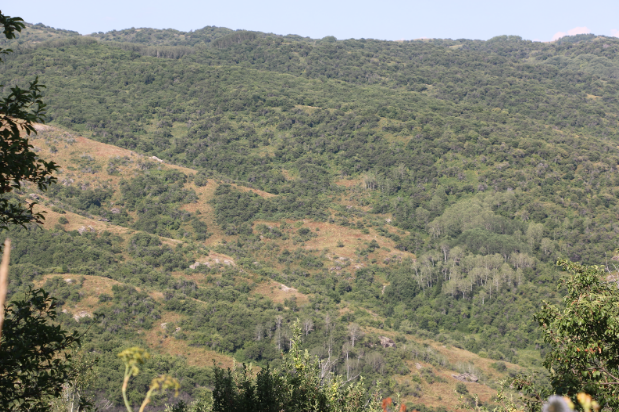Central Asia Regional Bed Varieties: by Cameron Lee

Take an Agricultural Tour of the World with Gateway Greening! For the next few weeks, we’ll be posting a new blog post each Monday highlighting a regional bed from our Demonstration Garden. While these posts will not include growing instructions, they will be history lessons on the agricultural practices of regions around the world.
One of our regional raised beds in the Demonstration Garden this year is growing plants that were originally domesticated in Central Asia. While many people often overlook this region, some of the world’s most common foods are native to the area. Even something that many consider being uniquely American, such as apple pie, can trace its roots back to Central Asia. The region is unique in that it served as a confluence of culture between Europe and Africa to East Asia and India. Perhaps best known for Marco Polo’s journey on the Silk Road, the geographical location of Central Asia allowed the exchange of ideas, commodities, and luxury goods to travel between Europe and Asia. Stretching from the Caspian Sea in the West to China in the east, from Afghanistan in the south to Russia in the North, this region has a fascinating history where great empires rose and fell. This region includes the modern-day countries of Kazakhstan, Uzbekistan, Kyrgyzstan, Tajikistan, Turkmenistan, and Afghanistan. Home to a wide array of varied geography, like the high passes and mountains of the Tian Shan, the vast deserts of Kyzyl Kum and the Taklamakan, and especially the seemingly unending treeless, grassy steppes.

Zhongar-Alatau national park in eastern Kazahstan, which contains stands of the wild ancestors of several domesticated fruit species. The most famous of which are the stands of the wild ancestors of the domesticated apple. Some can be seen at the bottom and right corner of this picture.
This vast region contains picturesque landscapes that played a significant role in shaping human history. Countless trading caravans, herders, soldiers, and artisans all traveled along a series of trade routes that later came to be collectively known as the Silk Road. The resulting economic traffic through the region gave rise to the legendary Silk Road cities of Bukhara, Khiva, Loulan, and Samarkand. It is important to note that the “Silk Road” was not a road by modern standards, nor was silk the only commodity. It was a cultural and economic phenomenon of exchange and interaction that helped shape the world as we see today. The prehistoric Central Asians connected the corners of the ancient world and helped to spread innovations across the continent. While silk was by far the most valuable luxury commodity traded, goods like precious gemstones and minerals, luxury goods, spices, domesticated crops and animals, ideas, and technology were all exchanged throughout the ancient world. The dispersal of crops and animals remained unmatched until the Colonial era. Crops like wheat and millet traveled along the Silk Road, with millet becoming the summer crop of the Persian Empire and adopted by the common people of Rome and wheat to Han China, grown during the winter season, was transformed to make noodles and dumpling skins. The movement of domesticates saw a change in culinary traditions, gave rise to crop rotation cycles, as well as globalizing regional cuisines.
While Central Asia is seemingly a vast, desolate expanse today, parts of it were considered to be gardens of Eden for millennia. Until the first millennium BC, much of southern Central Asia was a lush expanse of short shrubby forests, which included wild cultivars of pistachio, almond, cherry, and English walnut trees. The mountainous regions were once covered by sea buckthorn, Russian olives, wild apples, hawthorn, mountain ash, and a wide variety of nut-bearing trees. While much of these forests are gone today, there are still small, vibrant pockets of agricultural land that continues to produce fruits including grapes, pomegranates, and sweet melons. The Memoirs of Babur or Bāburnāma, compiled between 1483 and 1530, chronicles the travels of Ẓahīr-ud-Dīn Muhammad Bābur, including his observation:
“Grapes, melons, apples, and pomegranates, all fruits, indeed, are good in Samarkand; two are famous, its apple and its grape. Its winter is mightily cold; snow falls but not so much as in Kabul (Afghanistan); in the heat, its climate is good but not so good as Kabul’s.”
During Bābur’s time, Samarkand was the capital city of the empire of Timur. Set by a fertile oasis watered by the Zarafshan river, the city was the center of education and commerce. In the heart of the city, Timur and his successors constructed the Rēgistan, an Islamic university that rivaled the grandness of European palaces.
Although many would influence Central Asia, the introduction of Islam had the most significant impact on the region. In 751 CE, the Abbasid Caliphate along with their ally the Tibetan Empire fought against the Chinese Tang Dynasty in order to control the Syr Darya region. Fought at the Talas River, the battle resulted in the Islamization of Central Asia. The Islamization of Central Asia has had profound impacts on the region, with the adoption or blending of the Islamic religion into native cultures. During this time the cities of Samarkand, Bukhara, and Urgench prospered and were centers of Islamic learning, culture, and art in Central Asia. Though the Mongol invasion in the thirteenth century would slow the process, Islam remains the dominant religion in the region today.
The adoption of Islamic architecture also led to the construction of ornate Persianate gardens and orchards, with the crops irrigated using a complex system of conduits. Perhaps the most significant achievements of the Qarakhanid period (840-1212 CE), was the development of elaborate irrigation systems and expanding cultivated farming land into the deserts, even digging a one-hundred kilometer (sixty-two mile) canal connecting the Taraz region of southern Kazakhstan to the Ferghana lowlands in Uzbekistan. The agricultural practices of the region following the Mongolian conquests were preserved in Persian agricultural manuals, such as the Irshad al-Zira’a (guide to agriculture) composed in 1515 in Herat, Afghanistan by Qasim B. Yusuf Abu Nasri Harawi. The book discusses irrigated gardens and elaborate pavilions, going in-depth about the cultivation of wheat, barley, millet, rice, lentils, and chickpeas; viticulture; garden crops, including cucumbers, lettuce, spinach, radishes, onions, garlic, beets, and eggplant; herbs and aromatic plants; fruits and nuts including, melons, pomegranates, quinces, pears, apples, apricots, plums, cherries, figs, mulberries, and pistachios. The prominence of rice is also attributed to the period. These gardens and orchards were later expanded upon, under the stewardship of the tenth-century Qarakhanid ruler Ibrahim ibn Nasr. Large-scale game and hunting preserves were created. The gardens and orchards were well-maintained, in fact, Suzani Samarkandi, the only poet of the Qarakhanid court whose writing survives today, stated that Samarkand was “a paradise on Earth.”
Central Asia was a critical region in shaping world history. The cultural effects from the region still affects us today. The Silk Road revolutionized agricultural practices, changed culinary traditions, and saw the spread of innovation across the ancient and medieval world. Highly lucrative, any empire that held control over parts of the Silk Road often experienced economic advantages. One of the largest empires in history, the Roman Empire even benefitted from the Silk Road. By enacting tariffs and taxing commodities arriving from the east, Rome was able to experience unprecedented economic growth. According to Pliny the Elder, advisor to Emperor Vespasian, estimated that more than 100 million sesterces of bullion left the empire as a consequence of the international commerce. Giving Rome the economic power to fund their wars and become an ancient superpower.
Beckwith, Christopher I. Empires of the Silk Road: A History of Central Eurasia from the Bronze Age to the Present. Princeton, NJ: Princeton Univ. Press, 2011.
Choi, Charles Q. “Silk Road Travelers’ Ancient Knowledge May Have Irrigated Desert.” LiveScience. January 12, 2018. Accessed August 23, 2019. https://www.livescience.com/61408-silk-road-helped-irrigate-desert.html.
McLaughlin, Raoul. The Roman Empire and the Silk Routes: The Ancient World Economy & the Empires of Parthia, Central Asia & Han China. Pen and Sword, 2016.
Spengler, Robert N. Fruit from the Sands: The Silk Road Origins of the Foods We Eat. Oakland, CA: University of California Press, 2019.
Stevens, Chris J., Charlene Murphy, Rebecca Roberts, Leilani Lucas, Fabio Silva, and Dorian Q. Fuller. “Between China and South Asia: A Middle Asian Corridor of Crop Dispersal and Agricultural Innovation in the Bronze Age – Chris J Stevens, Charlene Murphy, Rebecca Roberts, Leilani Lucas, Fabio Silva, Dorian Q Fuller, 2016.” SAGE Journals. June 1, 2016. Accessed August 23, 2019. https://journals.sagepub.com/doi/full/10.1177/0959683616650268.

